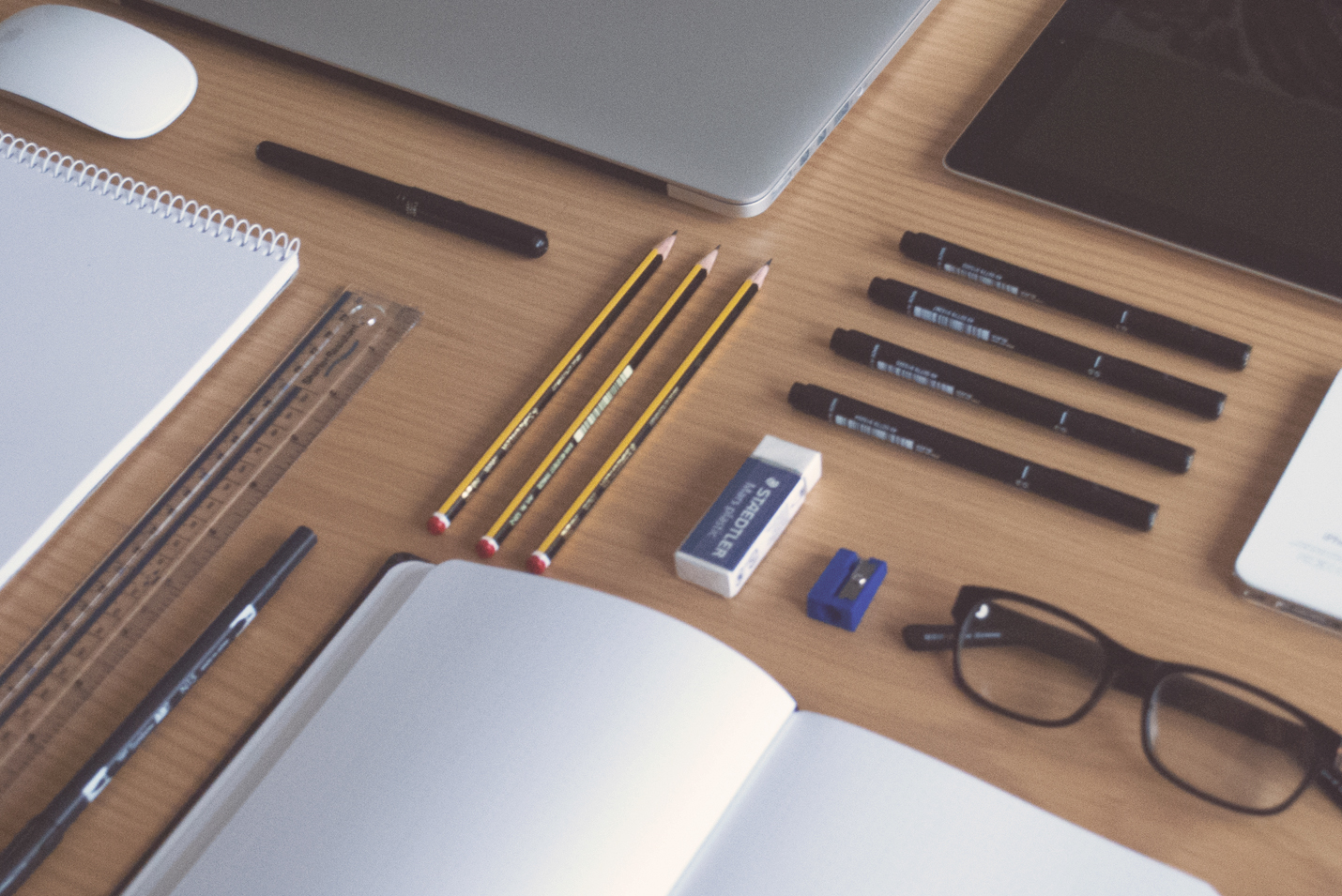Six Must Have Skills in a Web Designer

Lately, we’ve noticed a welcome movement within our industry toward demystifying design in order to make the conversation between agencies and clients more accessible. A website is essentially a company’s home on the internet. You would not want someone to cut corners while building your family’s home, and the same can be said for your company’s website. Companies hiring a designer should know what to look for in order to get the best results. While all designers have their unique aesthetic tastes, the great ones share a common skill set.
Here are the qualities that experienced, caring designers share:
1. A Designer is a Problem-Solver
“Design without constraints is decoration” — Robert Hoekman Jr. The Tao of User Experience
The number one mark of a good web designer is pretty easy to spot during the kick-off stage. A knowledgeable designer is one who approaches your project as a problem solver. You’ll recognize a problem solver because they will be asking lots of questions about your company and goals to help them make informed decisions throughout the project. The opposite of this would be the self-proclaimed creative genius who already has a grand vision for your website. You’ll know these types because they don’t ask questions. Instead, they already have a big idea for the direction of your website that has little to do with your needs and a lot to do with their portfolio.
Ways to determine if a designer has a problem-solving approach:
- Will there be an interview process to establish project goals?Problem-solving design teams will kick off with creative briefs, stakeholder interviews, and any other methods for collecting information on your project.
- Does the designer respond to feedback objectively? Healthy debate with your designer indicates that both parties care about the success of the project. However, feedback should be met with respect from both sides, and the outcome of any debate should be productive. It’s the responsibility of the designer to make sure all conversations around feedback move the project forward.
2. A Designer is a Researcher
“(a designer’s) job is to collect good ideas. The more good ideas you collect, the more you can choose from to be influenced by.” — Austin Kleon, How to Steal Like an Artist
We’ve said it before, and we stand by the concept that no good work can happen in a vacuum. At Monkee-Boy, we’re as big on collaboration as we are on research. The best work comes from meeting users’ needs, and you can’t meet those needs without taking the time to find out what they are. Good research can give you insight into your competitive landscape, user base, and opportunities for innovation. Every designer’s research methods will vary but as long as they’re looking for ways to answer these underlying questions you can rest assured that you are in good hands.
Here are three ways to assess if your web designer has research skills:
- Designer relies on analytics, not intuition. A designer who doesn’t understand the importance of analytics is missing out on a huge chunk of valuable data. For the good ones, it’s essential to dive into how users are currently using your website -- and that means looking at the analytics.
- Designer doesn’t have all the answers (and knows it). It’s a good sign if things come up that your designer admits to not knowing off the top of their head. A good web designer should admit when they can’t speak to something and follow up after researching, rather than offering an uninformed opinion.
- Designer has a curated library of resources, case studies and industry standards. Designers, like researchers, are hoarders of information. They will likely have a list of go-to resources they pull out during research phases. Ask them if this is something they use and update. If the answer is “yes,” you are working with a professional.
3. The Designer Doesn't Have an Ego
Personal opinions are never going to make a winning project. The designer needs to be able to consolidate ideas from both the internal and client teams so they can weigh ideas against user and project goals. With all those factors, there’s no room for a designer’s ego in decision-making. While you should look for confidence in your designer, signs of a big ego could mean that they will put their agendas and emotions before your user and project goals.
Ways to determine if the designer is humble:
- Designer is an attentive listener. You are the designer’s biggest asset for gaining information about your company. Smart designers listen and take note of everything you offer.
- Designer is respectful with you, especially in moments of debate. The designer should respect your opinions, even if they don’t agree with them, and then find a way to merge your opinions with the project and user goals to make a stronger project.
- Designer treats their internal team with respect. Some people may be great at first impressions but leave a lot to desire once you marry into a contract. If you’re working with a team, try to observe how the designer interacts with their other team members.
4. Clear & Timely Communicator
At Monkee-Boy, it’s an unspoken company policy to be late adopters of jargon in order to keep client communication efficient, informative, and seamless. The buzzier the word the less substance and definition it contains; for example, we would never tell our client we plan to make a feature “social.” What does that mean to the client? To the user? Probably not much. Instead, we aim to describe how we plan to build a section of the website to encourage sharing on social media, with a particular emphasis with that sharing’s connection to the project goals.
In addition to keeping communication clear, your designer should be good at learning the best way to communicate with you. Some clients are more hands on than others and want as many details as possible; others are extremely busy and prefer the short version. For the most part, look for tidy descriptions that link features and functionality to the project goals you discussed during kickoff.
Here are three ways to assess the communication skills of a web design team:
- Communicates without overwhelming you with unnecessary updates. The designer should collaborate when appropriate but also know when to put their nose to the grindstone and get work done.
- Guides feedback toward defining problems, returns solutions. It’s the designer’s job to help interpret feedback and suggestions. They may need to ask the same question a few different ways, but ultimately they should be able to get to the root of any problems you’re experiencing.
- Presents work - with context to explain choices. Beware of any designer who sends you work without explanation. There are a million tiny decisions that go toward producing a design and they should be sharing at least a portion of those with you when it’s time to review.
5. User-Centered Designer
“The way to earn consumer loyalty and competitive advantage is to deliver the most satisfying experience.” — Curt Collinsworth, UXMatters
Focusing on your users is the only way to launch a successful project. However, your designer shouldn’t be so enveloped in putting the user first that they lose site of your project goals. The perfect solutions meet user needs while conditioning the experience to meet business goals.
Ways to determine if designer values user centered design:
- Employs UX research strategies such as user personas, surveys, and user testing. A good designer knows that the only way to figure out exactly what the user needs is to connect with users. Neither the client nor the designer can bring to the table an understanding of the users’ needs, desires or pain-points without testing.
- Offers solutions for user testing no matter the budget. User testing doesn’t have to be expensive. Sometimes a handful of responses to a well-framed question can solve important problems. A designer who suggests small testing when bigger testing is not an option understands the value of user insight.
- Will sacrifice aesthetics for usability. If something doesn’t test well with users, the designer should be able to give it up readily.
6. Passionate
A good designer is passionate about doing good work, not just working within a particular style. They should be able to differentiate between good work and personal taste. Any designer who gets hung up on superfluous aesthetic details (that don’t affect usability) probably doesn’t stand behind the project goals.
Ways to determine if your designer is passionate about the project:
- They’re excited to explain the foundation for their ideas. When presenting, the designer should show excitement and confidence about how your project will work/function — not just how it will look.
- They have a robust understanding of the ways their solutions fit the project needs. A designer who is passionate about doing the best work possible will have thought through numerous scenarios and will only pitch ideas that solve problems.
- They will stand behind for those solutions. Sometimes you will ask to remove, move, or redesign a part of the project. Revision is part of the design process, but you’ll know you have a passionate designer when they ask why. It’s your designer’s job to look out for your interests, and that means double-checking to make sure they fully understand the reasons for a change.
“Successful design projects need equal participation from the client and the designer.” — Mike Monterio
Before hiring a design team, we also highly recommend reading Mike Monterio’s “You’re my Favorite Client,” an easy guide on how to collaborate with the skilled team you’ve hired do the best work possible.
How did you know you hired a good designer? Tell us on Twitter @monkeeboy
Latest Articles

8 Ways to Optimize Your WordPress This Week
We use Wordpress to build all of our sites. In this article we’ll share 8 tips for optimizing your WordPress website for improved performance and functionality. From choosing a lightweight theme to optimizing your images, these strategies will help you get the most out of your site.
Continue reading
Chart Your Course - The Web Accessibility Road Map
The second article in our "Road to Web Accessibility" series will guide you on how to formalize the path you plan to take to build an inclusive experience.
Continue reading